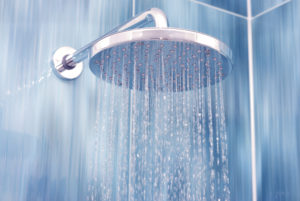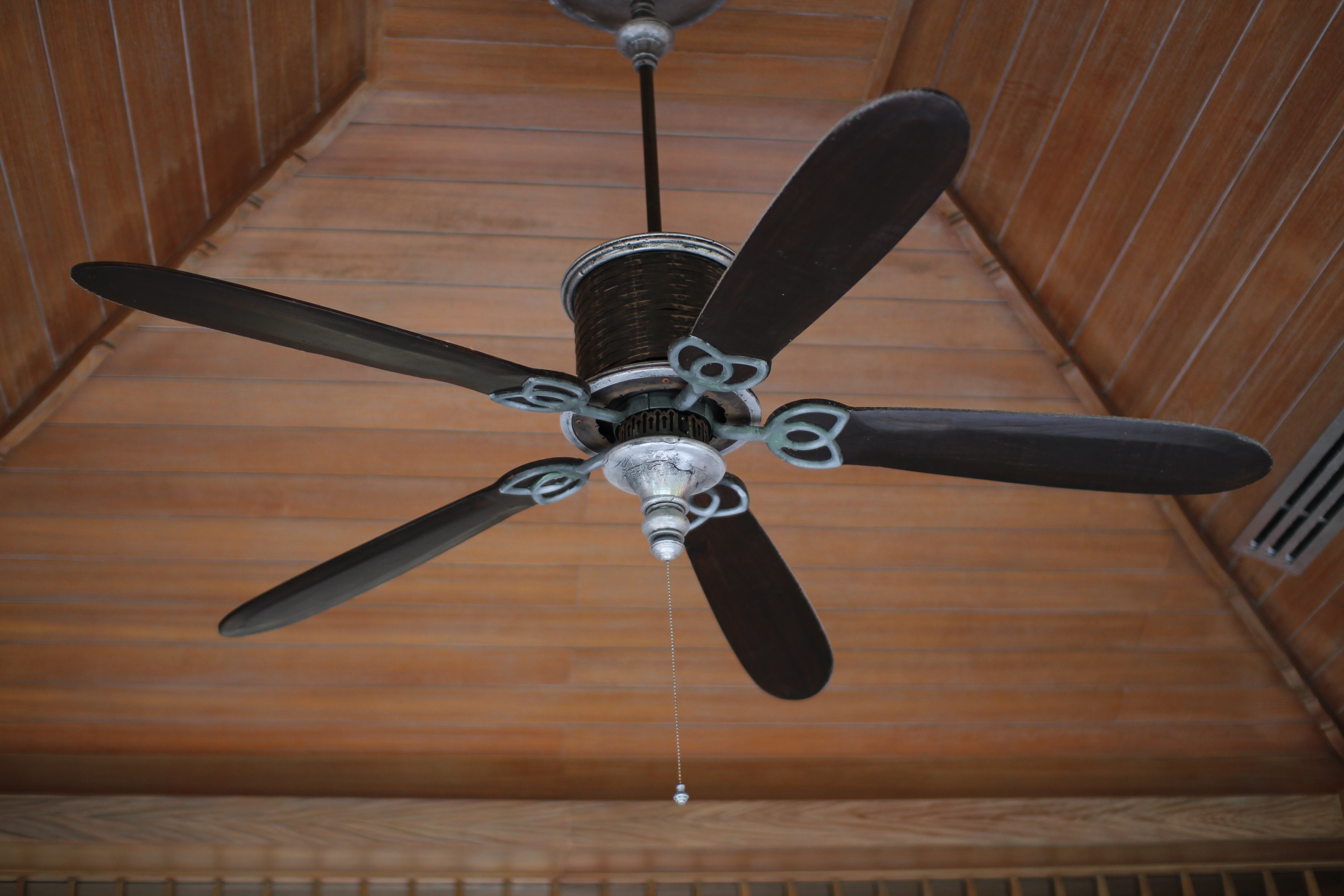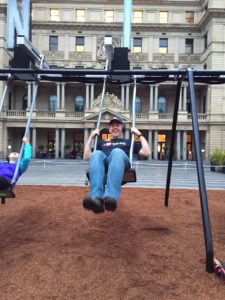From better ways to shower, to channelling your inner Nana, we look at five ways you can reduce your energy consumption without sacrificing comfort.

Melbourne from above White Night Melbourne 2013: https://www.flickr.com/photos/72562013@N06/8502178264
Bright lights, big city – lots of energy. What can we do to use power more efficiently? Via Flickr/Chris Phutully
Listen up. Here are some wise words you don’t hear often enough in public discourse, but it’s the sort of wisdom we can all embrace: energy efficiency isn’t about cold showers and warm beer. It’s not about unplugging your utilities either. There are really simple decisions you can make that will save you heaps of money without the need to change your lifestyle.
It’s time to rethink energy efficiency
In the last 100 years in the developed world, we’ve gotten used to the idea that we have unlimited energy available at our fingertips. While that’s not going to change any time soon, a lot of effort and resources go into making that possible.
Energy isn’t frivolous and it isn’t free, so the challenge is this: how do we make energy affordable and available, while protecting our planet?
While technology and innovation will play the biggest part in ensuring our energy sustainability into the future, as consumers we have a role to play too.
For everyday Australians, energy efficiency is more about being mindful than making sacrifices. If you make some smart decisions around the home to improve the environment or effectiveness of the products you use, your comfort levels will also increase.
So how do you put that into practice? Here’s my top five simple, yet really effective tips for cutting your electricity bill.
-

A clever ‘lifehack’ for your shower could save you heaps. Image: Andrey Volokhatiuk
The perfect hot shower every time
If you rely on electricity to heat up your water, you might be surprised to know that this typically makes up one third of an average Aussie family’s electricity bill.
Most of us start up a shower by cranking up the hot water tap. When it gets too hot (typically before having even jumped in), we turn on the cold tap to cool it down til we reach the ideal temperature.
There’s a much smarter way to perfecting your shower. By simply adjusting the temperature at your hot water system to a level that hits the sweet spot, you can save daily – multiple times if you’re a family – on massive amounts of energy that’s otherwise wasted by overheating your water.
- Get back to doing what Nana used to do
Fixing those wintry draughts can go a long way to keeping your home comfortable, with added benefits for your hip pocket.
They may not be sexy, but those draught or door snakes your Nana was fond of will do wonders to prevent cold air from coming in and to stop hot air escaping at the base of your doors and windows (and vice versa in the summer time).
Rather than competing with draughts, you can fix them so you have a more comfortable and stable room temperature and are less reliant on maxing out your heating or cooling.
If draught snakes are just not your thing, there are plenty of other more discreet options for draught-proofing your home such as tape or gap filler (caulk) to seal gaps and cracks, dedicated door seals, and closing off vents.

Using a ceiling (or pedestal) fan in combination with the air conditioner is a clever way to save.
- Make the fan your number one
When it comes to air conditioners, in summer every degree cooler than 24 degrees uses about ten per cent more energy. Likewise, every degree warmer on the thermostat of your split system heater can increase the heating component of your energy bill by ten per cent.
Yet, a ceiling or pedestal fan can use one tenth the energy of an air conditioner for the same room. So before you get hasty with the temperature on the air conditioner thermostat, consider first turning on a fan to work in conjunction with the air conditioner to provide a cooling breeze. It can make a huge difference and is less energy-intensive, allowing you to set your heating or cooling to a more moderate temperature.
- The more stars, the more savings
Data shows that more efficient appliances and smarter house design have a big effect on energy efficiency. The rule of thumb is: if you replace an old, inefficient long-life whitegood with a new one, no matter what you pay, it will likely be more energy efficient as the bar for baseline performance is constantly being raised.
That said, if you can afford to pay a little more for a major appliance with a better energy star rating, it will have paid for itself in a year or two and you’ll be rewarded with 10-plus years’ worth of energy savings.
So if you’re thinking it’s time to upgrade your washing machine, there’s a very valid argument for making the purchase and forking out a little extra upfront. You’ll likely save on water too.
- Take advantage of new tools
There’s a bunch of new and helpful tools out there that can help you make smart decisions and take control over your energy consumption.
These tools allow you to set your appliances, such as your dishwasher or washing machine, to operate during off peak periods when there’s less electricity demand and lower rates. They also allow you to remotely switch on and off appliances via a phone, tablet or computer.
We recently developed a home energy app called Eddy that’s being trialled in Western Australia and Queensland. When it becomes available next year through Australian company HabiDapt, households will be able to take control of their energy consumption anytime and anywhere.
Meanwhile, our AccuRate software tool is the industry benchmark for assessing the energy efficiency of homes. It’s used by designers and architects to model, measure and compare the energy efficiency of house designs. This is helping Australians move into a new era of comfort and energy efficiency.

To Infinity and beyond: here I am generating kinetic energy at the Infinity Swing in Sydney.
The CSIRO Infinity Swing
This isn’t really an energy saving tip, but it is one way of turning good clean fun into good clean energy.
You may have heard about our CSIRO Infinity Swing which just finished up in Sydney. Thousands joined us at Circular Quay to have a go on our 8-seater swing, where they converted their momentum into sustainable energy to power the stunning light and sound installation.
We’re not done yet, the Infinity Swing is heading down to Federation Square in Melbourne from Monday 16th to Saturday 21st November 2015, and it’s free for all.
We will have representatives on hand to discuss our ongoing energy research and discuss other useful tips for saving energy around the home. For more information, visit: infinity.csiro.au


3rd December 2015 at 8:45 pm
I scrub kitchen dishes in cold water using good old bar soap and rinse off soap with cold water before a quick rinse with boiling water from the kettle. Brilliant shine and i am healthy day in, day out. We have been conned into spending good money on extra hot water and unnecessary detergents. Of course the dish-washer that came with the house does get a run once in a blue moon.
2nd December 2015 at 2:48 pm
70C is the maximum legislated allowable water temperature and the hottest that a domestic water heat will attain. Unless one has a problem with running out of hot water, then the original comment about energy efficiency should be followed (set the temp to the preferred shower temp).
If you are concerned that the water temperature you use for washing dishes is not great enough from your tap, pour in some hot water from the kettle. However, I would like to see the research that shows this is necessary. How many “dangerous microbes” are in the leftovers from my bowl of cereal I am washing? Or from my dinner plate that I have just finished eating from? Or cooking utensils that are often still too hot to touch anyway?
CSIRO’s original advice seems perfectly sound to me and does not need correcting within context.
2nd December 2015 at 11:34 am
Another reason to avoid reducing hot water temperature below the normal 60 degrees is that growth of particular very dangerous bacteria can occur at lower temperatures. 60 degrees was considered a good compromise between complete safety and high energy cost.
2nd December 2015 at 9:33 am
My first thought too.
Hotter water also required for the laundry on occasions.
14th November 2015 at 9:46 pm
“There’s a much smarter way to perfecting your shower. By simply adjusting the temperature at your hot water system to a level that hits the sweet spot, you can save daily – multiple times if you’re a family – on massive amounts of energy that’s otherwise wasted by overheating your water.”
This doesn’t seem like sound advice because isn’t the temperature needed for showering much lower than the temperature for washing dishes? Wouldn’t you risk bacteria not being killed when you wash your dishes, or worse, this bacteria being able multiply in your hot water heater?
20th November 2015 at 1:17 pm
Hi darkpenguin, you’re right — we should have cleared that up. The water should be at least 70°C to kill dangerous microbes.
Thanks for the pick up,
Jesse,
Communications staff
2nd December 2015 at 1:43 pm
Actually this is totally incorrect, if you turn down the hot water temperature, you need less cold water to balance it, and as such the temperature may be better but the proportion of hot to cold is changed and you use more hot water, so cancelling the effect.
2nd December 2015 at 2:43 pm
The generally accepted setting to inhibit bacteria such as legionella is 60 degrees. Higher settings will lead to more energy consumption and more standing losses from the storage tank:
“Set the thermostat of your storage HWS to above 60°C to prevent growth of harmful Legionella bacteria. Any higher temperature means that energy is used unnecessarily.” (See “Hot water tips” – http://www.yourhome.gov.au/energy/hot-water-service)
3rd December 2015 at 1:11 am
By law, newer hot water storage systems must have a tempering valve that allows mixing of incoming cold water with the outflowing stored hot water to achieve an anti-scald max outlet temp of 50°C, in domestic settings. The stored hot water is still maintained at temps in excess of 65°C to inhibit microbial activity.
If your storage unit doesn’t have one of these valves already fitted, a plumber can easily retrofit one external to the unit. The valves themselves are relatively cheap < $100 from the hardware store.
One other thing to watch for on storage hot water systems is the over temp/pressure relief valves. Should these become faulty and leak, energy and water usage and therefore cost can rise dramatically, but unwittingly be put down to changing usage habits or missed completely as we become more and more used to regular increases in utilities charges.
These relief valves are supposed to be manually activated on a regular basis to ensure they continue to function correctly, but I suspect the average home owner doesn't even know they exist.
I had one recently malfunction over a period of months with a sustained average loss of 6 litres of hot water per hour. Not enough over a day to raise alarm bells, but enough to certainly create a sizeable increase in the bills.
Under normal circumstances it's not unusual for these valves to regularly activate automatically with a subsequent loss of hot water and unit efficiency. The valve's automatic activation can be minimised and long term reliability increased by the addition, on the supply side, of a cold water expansion control valve.
The cold water valve is set to relieve tank pressure at a lower set point than the hot water valve, which means the hot water temp/pressure relief valve no longer activates as a result of high tank pressure and consequently hot water is not lost in the process. This makes the system even more efficient from an energy usage perspective.
However, cold water will still be lost as part of the normal unit operation.
The cold water expansion valves don't appear to be stocked by 'run of the mill' hardware stores but can be obtained through plumbing specialists. I think they're priced around the $100 mark as well.